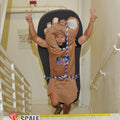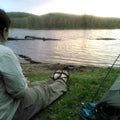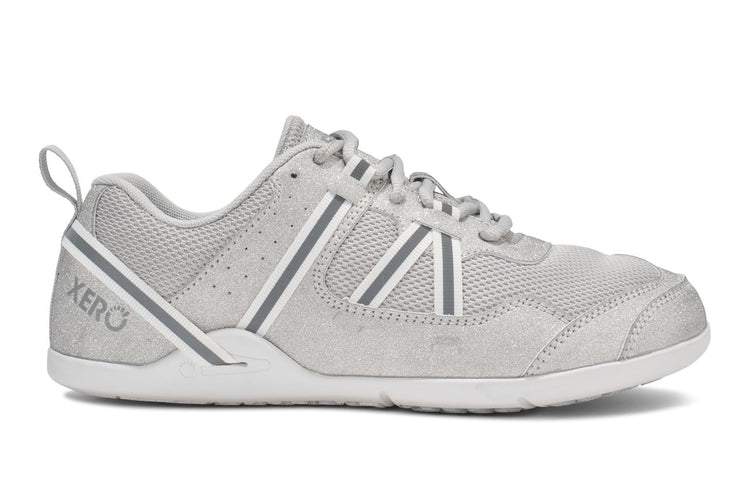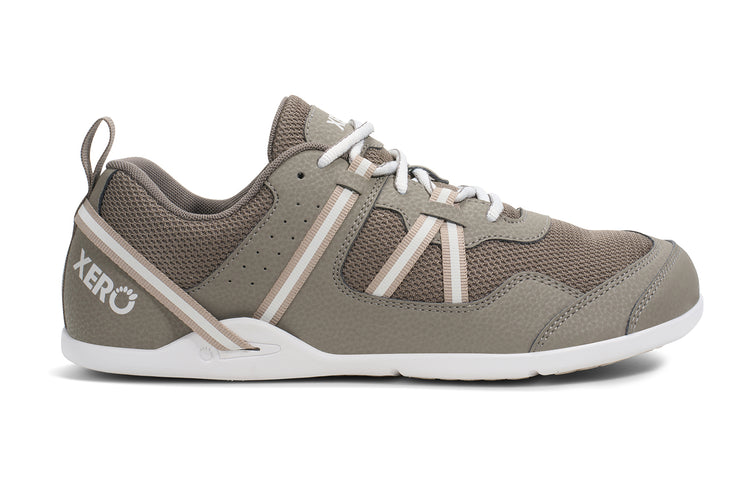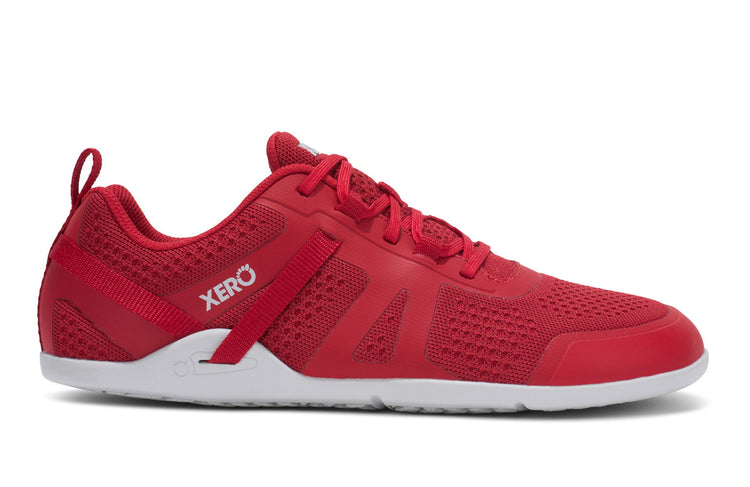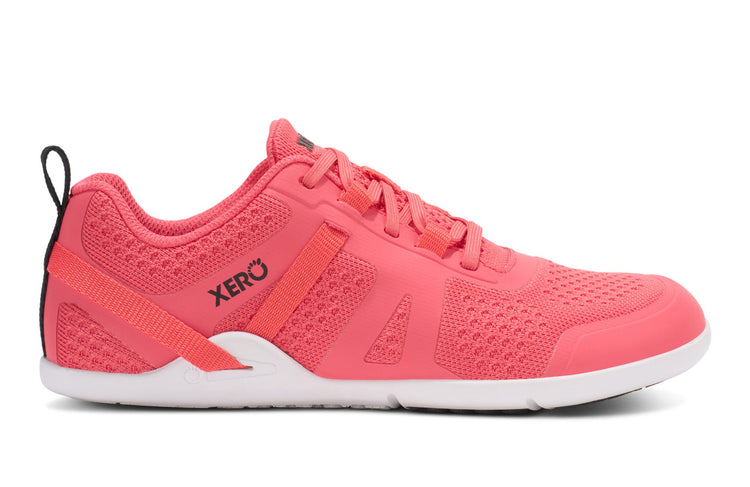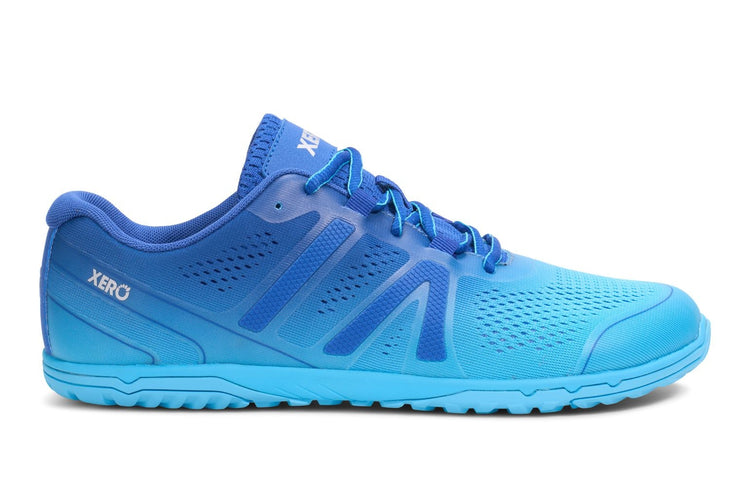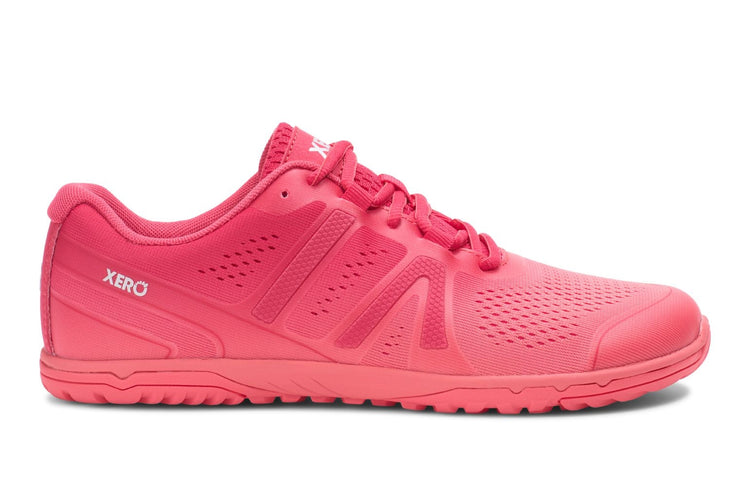latest News
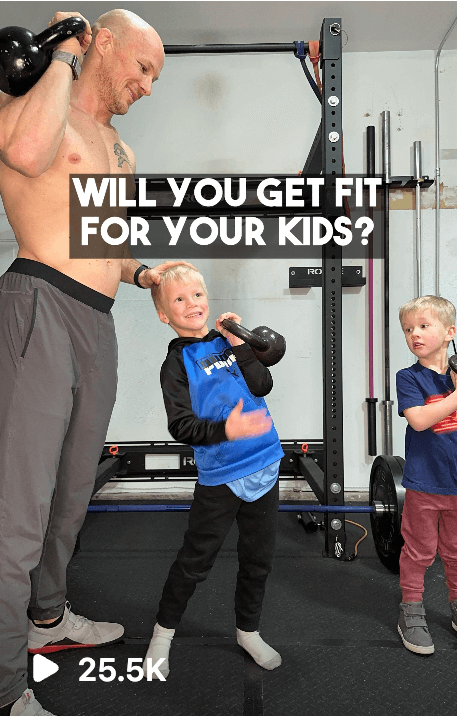
Simple Methods for Busy Dads to Stay Fit and Healthy With LivFitKarl
As a busy dad, you’ve a lot going on. Keeping up with work... spending time with your kids... helping around the house... working in the yard... Finding time to for health and fitness can feel tough, but it doesn’t have to be. Instagram influencer and Xero Shoes partner LivFitKarl has plenty of tips for doing effective workouts based on natural movement that don’t take up a lot of time. Even if you have just a few minutes at the beginning or end of the day, you can do an effective workout with minimal weight to increase your mobility, improve your stamina, gain more flexibility, and grow stronger—all things that will help you show up as your best for those important little people (or fully grown people) in your life. It all starts with making a commitment to being the fittest, healthiest version of yourself. And keeping what is most important front and center. Your fitness journey doesn’t have to be about how fast you can run or how much you can lift. It can be about keeping up with your kids and having the energy and stamina to pursue the things you enjoy. You also don’t need a lot of equipment or a dedicated space. Even on vacation, if you can find a few minutes, you can keep up your progress toward your fitness goals. And remember, even little choices like wearing barefoot shoes to walk around town, can help you reach your health and fitness goals faster. Training in barefoot shoes gives you access to natural movement, which may help you make the gains you’re after. Karl’s Favorite Xero Shoes https://xeroshoes.com/wp-content/uploads/2023/01/Video-5.mov For Summer Barbeques and Casual Nights Out Dillon BUY HERE Dillon Canvas Slip-On BUY HERE Kelso BUY HERE Go-To Every Day Shoes Prio Neo BUY HERE Nexus Knit BUY HERE For Workouts Speed Force II BUY HERE Forza Trainer BUY HERE
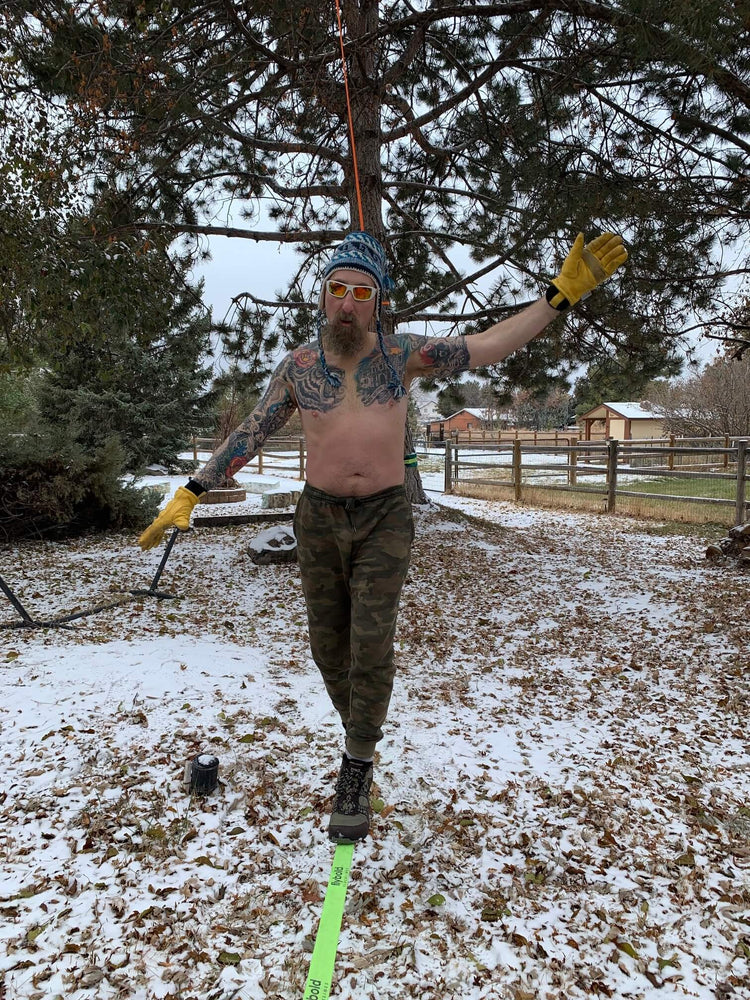
Mike Gabler, Survivor 43 Winner: Stronger from the Ground Up in Xero Shoes
The reality TV show victor shares how he built balance and resilience to outlast 15 competitors in Fiji and come away with the crown! Mike Gabler has always been picky about his shoes. An avid hunter, hiker, and slackline enthusiast who also spends some long days on his feet in operating rooms, Gabler knows what he wears directly impacts how he performs under pressure, but also how he feels at the end of the day. So when he was chosen to compete on the 43rd season of the reality TV show Survivor, Gabler took the decision seriously. He says his Xero Shoes Xcursion Fusion boots were a secret weapon on the show—and since he defeated all comers and won the show at age 50, we can be sure this is a guy who knows about covert strategies! We caught up with Gabler in his hometown of Meridian, Idaho, to discuss how he trained and performed for his victory in Survivor 43. How did you learn about Xero Shoes initially? So by day, I work in the operating room, and I stand for hours. And I usually wear cowboy boots with a heel on them. But after long days, I found that I just couldn't get comfortable, even at night sleeping. And I was looking around online, and a Xero Shoes ad found me. I bought a couple of pairs: Z-Trail, Xcursion Fusion, and some Alpines. And they took a little getting used to in the beginning, because it's a different way to walk. But once I got comfortable in them, it felt amazing, especially when I was on the trail. When I was hiking in Idaho or Alaska during the spring or summer, I loved them, because it made me feel like I was attached to the ground. So then when I went on this TV show, I knew I wanted to be lean and mean and be able to balance and work well. I have a bunch of different types of shoes at my house, and I was in my closet looking down at all the choices. And I felt like I had to select my Xero Shoes. They were my go-to for everything that wasn't aquatic. Even then, I wish I had brought a second pair of Xero Shoes, because instead I brought these surfing shoes where your toes go into little pockets. They just never dried out, and I developed a jungle rot problem. But I love my Aqua X Sports now, and they would have dried way better. Did you strategize your footwear choices during training? I did! Balance and core strength were a big component, and I did a lot of slacklinin. Whenever I did that, I wanted the closest thing to barefoot. Balance is crucial on this show, because there's a lot of challenges where you run across a beam holding something, or stuff like that. I definitely knew I didn't want any shoes with a big foam platform on the bottom. That wasn’t going to help me out with balance or posture. And you know what? I left the game with five records and won the thing, so I guess my shoe selection helped. What model were you wearing on the show? I used the Xcursion Fusion. Sometimes on the island I wore wool socks with them, and sometimes I would go barefoot in them, depending on how dry my socks were. I was wearing them when I broke a Survivor record on the grip challenge in episode 7. There was a huge obstacle course we had to go over that had balancing and carrying, and the record for it was 25 minutes. And I ended up breaking it with about 38 minutes. That's when my opponent, Cowboy Cody finally let go. Did you see anyone on the show regret their footwear decisions? There were a couple people that had those big shoes with foam on the bottom, and they rolled their ankles. And those are injuries that linger when you're out there in the jungle, but unfortunately the game doesn't stop for you to heal. You just have to keep going. So for me, not only did the Xero Shoes help me on the island, but I think it was going back before that, because I wore them for about a year beforehand. It made me think of all those little muscles in my feet and ankles that you don't use when you have one of these big foam balls that you're walking on. Those muscles were stronger. And here’s another thing: I was 50 during the show, and my body held up really well. In 43 seasons, there's only been two winners over 50. I'm the second one. And I'm somebody who has had knee issues and pain in my life, and I was really concerned about that! But during the game I had no issues. So I think they may have helped me a little bit in preparation, but they certainly helped me simply to stay in the game. Did you make any footwear converts on the show? For the most part, people were pretty happy with their shoe choices, because everybody puts a lot of thought into it. But as the show progressed, people would ask me, “What are those?” Because the Xcursion Fusion are really an interesting design. They look a little like a moccasin, but they give you some ankle support on the exterior. A few people even tried them and told me, “I'm getting a pair.” You definitely had some complicated relationships to maintain. As the show went on, it felt like a big part of your strategy was to “hide in plain sight.” How did that help you? I used what I call the “Alligabler” strategy to manage my threat level. I’d strike, then go back underwater for a little while. You know, if you're not careful, people will notice you, and they'll start taking shots at you. So I quickly kind of had to change my game and adapt to get under the radar. I was in on all these alliances, but everybody thought I was just in theirs. And it kind of helped me out, because I had a lot of information coming through me. And then I was able to make decisions that helped advance my game. Then, in the back half of the game I was more of a farmer, just planting a lot of seeds. Survivor is like downhill skiing through trees. Whatever you think is going on, if you can't pivot quickly, you're gonna get slammed. But you know, the whole game, I had zero votes against me until the very last night. And that’s when I got seven out of eight, which is a near perfect game. That's about as good a game as I could play. So now that you’ve experienced the show, but also watched it, what felt most real and unreal about your reality TV experience? Watching it back was simply amazing. When I got back on June 1, I was 38 pounds lighter than I am now. And obviously I knew what's going to happen as far as the scoreboard. But it was like watching a football game where it's 33 to 27 in triple overtime, and I didn’t know what the plays were going to be. The editing is really what the plays are, and I got to watch that live with you guys. Of course there's a couple of things I would have liked them to show a little bit more of, but the producers of Survivor are genius storytellers. They had everybody guessing all the way through. I thought season 43 was a very entertaining season, but it’s also one that’s going to age really well for people who binge things later. There were some parts of it that were a little bit slower. But I liken it to a roller coaster: it climbs and goes tick, tick, tick. And then after a little bit, it goes right into some serious drops. We definitely left a lot of jaws dropped along the way, and it was a lot of fun. Now that you’re back, what’s your favorite thing to do in a pair of Xero Shoes? When it's cold outside, like right now it’s 10 degrees here in Boise, I put on a pair of wool socks, put on my Alpines, and then I go out and get on the slackline. I even get a sweat going when I'm out there. It’s just really chill. I’ll put my ear pods in with some cool music, and then just do that for an hour. It’s just a perfect way to leave my day and whatever else is going on behind.

Xero Shoes Partners with Dignity Restoring Hope
There's nothing worse than leaving your beloved home in pure fright. Through the Dignity Restoring Hope foundation, we were able to connect with Iryna and her young family of Ukrainian refugees.Introduce yourself, what is your name and how old are you? “My name is Iryna and I’m 30 years old.”Where are you from? “I'm from Kyiv.”What were you doing in Ukraine? “At that moment I was on maternity leave, we have 4 kids, and the youngest was 2 years old, right now he is 3 already.”Is all your family here in the Czech Republic? “Right now we come back to Kyiv. But later we are planning to go back to Prague. Right at this moment, my son has an operation on his leg. There are things we need to take care of and then we are arranging our return back to the Czech Republic.”Why have you decided to go to the Czech Republic, was it a deliberate choice? “It wasn’t a choice. That was all unexpected. We didn’t know where are we going and what to do, complete misunderstanding. But at that moment I was studying online and my classmate, who lives in Prague, called me on the 24th of February and invited us to come to her and offered to help. We were driving through different cities and finally decided to go to Prague. We wanted to stay for one week and see how the situation is going to change, to realize what is going on. We stayed for one month without registration, every day hoping that will end today, but there was no end in sight. Finally, after a month registered and got a visa for temporary residence”Were you leaving Kyiv the day it started? “Yes, we awoke by the sounds of the explosions. Packed some things in a suitcase, woke the children, jumped in the car, and went nowhere”What is the current situation in Kyiv? “The last days were quite tough. The air–raid alarms went off very often. Thank God, there were no explosions. A few days, after we came to the Czech Republic, we were watching the explosions from our window. This is scary, painful, and displeasing. But the days following all of Ukraine suffered from bombs. It is an intense situation, this is war.”How does your children react to a civil defense siren? “We were talking about that a lot, I was showing him a cartoon about the air–raid alarm. It is our friend, it notifies us about the threat of an attack and helps us. So now they are absolutely fine about it, say “Hi, alarm and thank you” because in the cartoon it is said to greet it and make your way to the shelter. They don’t have a fear. It is scary that they play games that you have to hide somewhere in the bunker, the flying shells. Luckily they didn’t see much of it but they know and understand everything from the information filed“Have you been to Europe before, to the Czech Republic? “ Yes, we were traveling before. More with the first kid. Then my daughter was born. And then we had another two kids, one year apart. With the oldest, we've been in the Czech Republic and Portugal. We've been traveling to Spain and Paris, but with one kid it was easier..”When you were traveling, have you ever thought about leaving Ukraine, to emigrate? “We had these thoughts when we were young, we were playing for a Green Card, but that was before we delivered our first baby. No action was taken for that. We had an idea to live somewhere for one winter, or 3 months, temporarily, this is interesting and changes your daily routine for a while. But apparently, once the war started, you realize that the only place you want to be is home.”Security is way more important, especially with the kids. “It is also about the choice. When you are choosing to leave. It is a conscious decision, your personal choice that is comfortable at this stage. But this is a totally different thing when you are running. First days we had a fear that we did something wrong, our actions can be against the law of this country. In Budapest, our money was stolen from our pockets. We were scared and lost anywhere.”Have you received help with documents here in the Czech Republic, people were willing to help? “We were waiting for a long time without registration and believed that it would end quickly. So after one month from the beginning, when we finally came there, everything was easy and fast. I've heard the stories before about how people were waiting all day, coming early in the morning to stand in line. But for us it was a very positive experience, people were nice, with open hearts, and did everything for us.”Was there a kind of negative situation, for example at kids' play yards, is there a difference in people's behavior, compared to the first weeks? “We had a negative experience on our way to the bank, the guy on the street was really aggressive and he was screaming that you are fascists. He was with a huge dog. I went to the bank and my husband stay in the car, and the stranger continued yelling. But my husband didn’t react to that, so he left. It is a catchy negative experience on the street that happened to us. We were spending almost all of the time in the play yards, and closer to summer more people from Ukraine came. Little conflicts I usually had with Ukrainian people, rather than with Czech. We went to the shopping mall, and there was a carousel with 3 horses. I was on the phone and didn’t get the whole situation. The lady put her daughter on it and turned it on, two of my kids saw it moving and also jumped on. The lady starts screaming this is only for her kid. Obviously, I took my kids off it. But the Czech moms act differently, they always say, common join, there are free spots, your kids can have a ride with mine. On the other hand, it is the difference in their attitude to their own things. When I come to the play yard, I simply pour out all the toys in the middle of the band, I don’t care who will take them, my kids share everything with the others. But when they tried to take a balance bike, the lady strictly notified me, that this is forbidden. We had a lot of different bikes and cars in Ukraine, and we were sharing them with everyone around, but we didn’t buy one in Prague, every day thinking that tomorrow we will go back home. But my kids are used to sharing and surprised that they can't take it. At the same time, i think this different attitude and vision might be right.”In general, do you like staying in the Czech Republic, and how long you are planning to be here? “By the end of the war, we really want to go home. This is not that the Czech Republic or Europe is bad, but we want to go home. We have a house here, I hope it will survive. We are here now, and you can’t imagine how much we were missing our city. We used to solve medical questions immediately, with stomatologists for example. My husband had a stomach ache and they offered an appointment three months later, or the nearest in another city in one month. We could manage this situation and we know that in Ukraine you can get the appointment on the same day. We love Kyiv. I believe our win is close. And we will all come back home”When are you planning to return back to Prague? Right now we have an operation for one kid, one of our kids is adopted, and we need to do a medical check for him, he has a condition of late growth, he is one year behind, and during the last year, we were working on this question a lot. He was in a hospital for a while, now he has a blood test. By the end of the week, we will have answers from doctors and in the middle of August, we are planning to come back to Prague. But it is not easy to find a place in Prague, we don’t want to go nowhere, firstly we will find a place to live, and then go.”Do you have relatives in Ukraine? All our relatives stayed in Ukraine. My husband's parents are from Mykolaiv. My h and my husband, we used to live there for a while. And every day you are reading from the news: bombed hotel - my cosmetologist was working here, an explosion in the city mall - I used to work here, destroyed university - my husband got an education there. That's terrible. The current situation in this city is a nightmare. Bombs every day, and for almost two months they don’t have drinking water. Two months ago they went to my mother in the Odesa region, and later, when we came to Kyiv, they came to us. This is horror. We are all together now, and i§m so happy, you never know, when is the last time we can see each other, and how long we won§t meet. For me, the importance of life and visions has changed a lot.”In general how much your life has changed? Do you feel safe, the ground disappeared below you, or points are a fulcrum? “On the first day, everything collapsed, utterly unknown. Early in the morning, it was still dark, we heard the sounds, I started throwing clothes into the suitcase, I caught myself thinking “for how long I packed, for a few days, or ф few weeks, or months, will I ever come back here, will my home survive will my home not be destroyed, will I have a place to come back.” The first month was the hardest. But after I went back to study. My academy is in Moscow, but I took a decision to quit it, even I was studying for 1,5 years, and left only one module and diploma, I couldn’t continue it. So I found another school, and after one month went back to study, it is really helpful and distracting. Housekeeping, studying, and taking care of kids there is no time for depression. I’m more flexible now and adjusting to changes is way easier. Sometimes you are at your emotional bottom. The last few week's news is full of stories from Mykolaiv and Vinnytsia. You are reading and feel like you are dying with these people. I allow myself this emotion, this is grief, this is pain from loss, but we are moving on. I have a motivation for myself to become better. They are trying to destroy us, but they can’t, instead of hatting them, I put my anger in the right direction I will grow, I will use this energy for self-development, we will be better, and we and our state become more beautiful. I will be a better person, opposite to them.”If you would like to donate directly to Dignity Restoring Hope, we encourage you to do so below. Donate To Dignity Restoring Hope Looking for more ways to help? We have put together a list of great foundations that are accepting donations for those in need.1. International Humanitarian Fund2. Children of Heroes 3. Fond Masha4. Voice of Children5. People in Need6. Unicef7. Doctors Without Borders
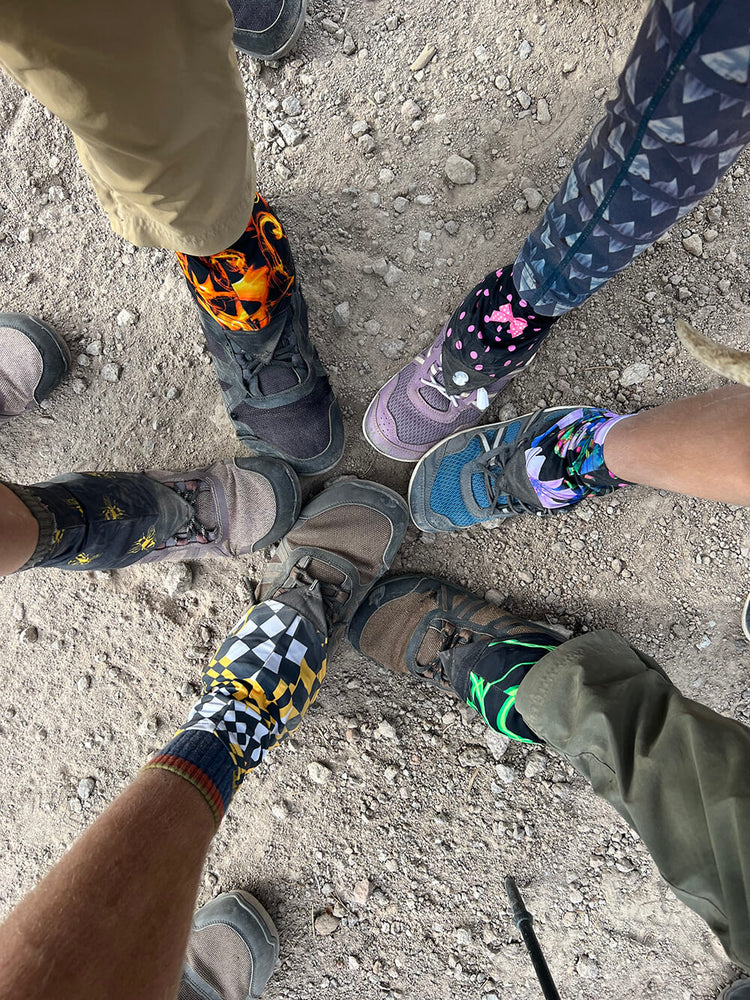
Family of 7 Hikes the CDT in Xero Shoes
Imagine this: hiking the Continental Divide Trail which is over 3100 miles with FIVE KIDS and a newborn baby! The Netteburg Family is making their way along the CDT, and we are lucky enough to sponsor them in Xero Shoes the entire way. In 2020, the Netteburg Family trekked the Appalachian Trail and their daughter, trail name “The Beast,” became the youngest person to ever trek the entire trail on her own two legs, at age four. Her older siblings, Lyol (was age 11, “Blaze”), Zane (was age 8-9, “Boomerang”), and Addison (was 6-7, “Angel Wings”) also trekked without difficulty. They spent a total of 177 days on trail. If they successfully complete the CDT in 2022, “The Beast” will become the youngest to trek the trail at age six, and oh yeah, since the AT they have added another little addition to the family. So now with five kids, they will possibly be the largest family to complete the trail and the first to carry a baby the length of the trail (which has been done many times successfully on AT and PCT.) It’s been amazing watching their journey unfold through social media, and we got an update from the Netteburg Family at about 600 miles into the CDT: “Our Xero Shoes are holding up amazingly well, considering they are ultralight minimalist shoes and the abuse we are putting them under. Most trail runner shoes long-distance thru-hikers use end up beat up by 400-500 miles and these are surprisingly resilient. Also, we’re so pleased with how the zero drop and the minimalist design makes us more intentional when walking.” We weren’t lying when we told you about the 5,000 mile sole warranty. No matter what kind of abuse you are putting Xero Shoes through; they can handle it. When you’re hiking a long distance such as the CDT it’s not only important to have lightweight shoes on your feet, but also to pack lightweight. The Netteburg Family was smart enough to bring Xero Sandals with them as well. Here is what they had to say about their sandals: “The sandals are so comfy and handy around camp and around town. Much better than clunky crocs or flip flops. Xero sandals mean we can still wear socks around camp. Feet don’t freeze and feet are protected. The truth, however, is the boots are so comfortable, we hardly ever use our sandals around camp. Really only when we’re in towns.” Needless to say, Xero Shoes are so comfortable you just may never want to take them off. As we cheer on the Netteburg family throughout their ground-breaking journey, it is humbling to see how our shoes can help this family achieve their goals. After walking over 1000 miles in the DayLite Hikers, and the kids walking over 700 miles in the Prios it’s clear that our shoes are quality products that truly last. We’ll leave it off with sweet words from the Nettebur Family: “We love having a company that supports families getting outside and into the wild. From the youngest hiker to the parents, we are all happy with our minimalist shoes. They have held up amazingly well. This is our second long trail, so our family has definitely been through some shoes. Xero Shoes hold up every bit as well as heavier traditional hiking shoes.”
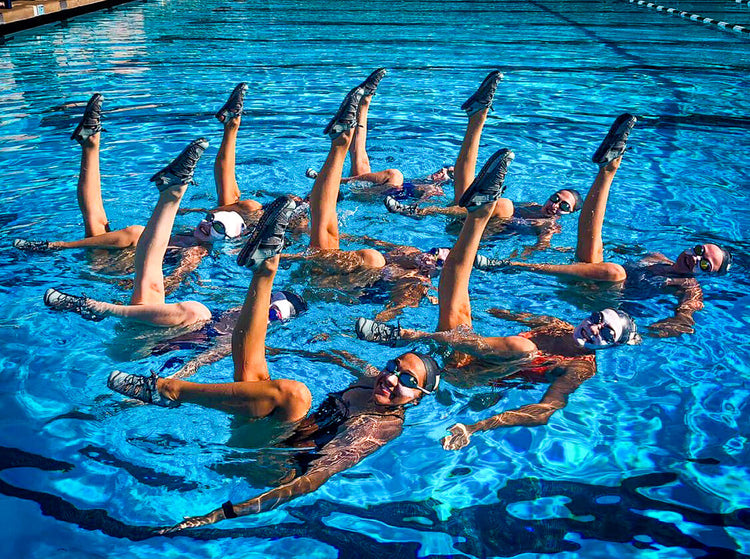
Xero Shoes Sponsors USA Artistic Swimming
FOR IMMEDIATE RELEASEEmily Falkenberg | USAAS | emily@usaartisticswim.orgLaura Beachy | Xero Shoes | beachy@beachymedia.comUSA Artistic Swimming Announces Partnership with Xero ShoesCOLORADO SPRINGS, CO – (July 8, 2020) - USA Artistic Swimming signs Xero Shoes as its official footwear partner providing athletes innovative shoes that match the team’s style in the water. “They are not your conventional shoe, and we are not your conventional sport,” said USA Artistic Swimming CEO, Adam Andrasko. “We both embrace what is special about ourselves and use it in a positive way.”Established 41 years ago, USA Artistic Swimming officially rebranded from USA Synchronized Swimming in March. Artistic swimming is a women's Olympic discipline which combines technical perfection, synchronisation, choreography, artistry and expressive power. Athletes wear beautifully decorated swimsuits and waterproof make-up. They often perform choreography and use music that is unique to their heritage, creating a rich and distinctive spectacle.Xero Shoes’ lightweight footwear prides itself on minimalism and natural movement. Xero Shoes have sold hundreds of thousands of shoes, boots, and sandals to customers in 97 countries, ages 2-92, and will now be worn by the USA Artistic Swimming Senior National Team at every international competition. "We're so excited that USAAS asked us to support their incredible athletes and coaches,” said Steven Sashen, Xero Shoes CEO. “We are looking forward to having lots of fun together and helping the team reach their goals, feet first." About USA Artistic SwimmingUSA Artistic Swimming [USAAS] was established as a nonprofit organization in 1979 and is the United States national governing body for the sport. It is recognized by the International Olympic Committee, the United States Olympic Committee and FINA (Federation International de Natation Amateur) — the international governing federation. USAAS organizes, participates in, and promotes a variety of competitive events each year. These events begin at the local level and continue in the following categories: Age Group (12-19), Junior (15-18), Senior and Masters (20+). https://www.teamusa.org/USA-Artistic-SwimmingAbout Xero ShoesFeel The World, Inc. (dba Xero Shoes) of Broomfield, CO, manufactures Xero Shoes®, addictively comfortable, lightweight, performance and casual sandals and shoes built with a “foot-first” design. Durable, stylish and affordable — Xero Shoes supply the fun and benefits of natural, barefoot-inspired movement with a layer of protection and comfort. FTWI launched in December 2009 and now has customers ages 2 to 92, in 97 countries who wear Xero Shoes for walking, hiking, yoga and gym-going, CrossFit, kayaking, rafting, paddle boarding, jogging, and even running hundred-mile ultra marathons. www.xeroshoes.com
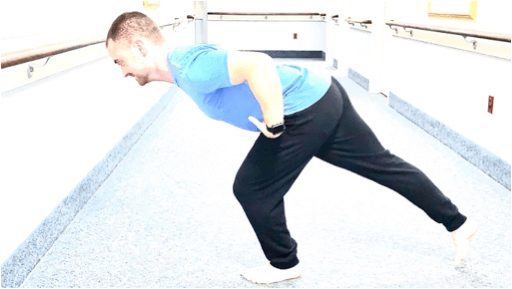
How to Perfect Your Balance
Have you always thought that you just aren't someone with good balance and that's that? Think again. It is totally possible to improve your balance! So how do you do it? Just like a weightlifter needs to lift progressively heavier weights to get stronger, if you want to improve your balance, you need to challenge your balance by placing yourself in unstable positions. In doing so, your body will develop the reflexes needed to maintain balance in that unstable state. This means that you need to be doing exercises that make you wobble...for if you are not wobbling, you are not being challenged. In time, a given activity that once made you wobble, will soon become easy and so you will need to move on to a more difficult activity.Safety first: If you’re concerned that you might fall during a balance exercise, always keep your hand close to some type of support like a sink, counter, or sturdy chair. However, when performing the exercises, you should keep your hands just above your security support and only use them when you feel like you may fall. By having your hands just above the support, you will not rely on your hands to steady yourself and instead will use the balance reflexes found in your feet, legs, and torso. So, let's begin. For an extensive list of balance exercises I regularly use as a physical therapist for patients, head to https://programs.perfectingmovement.net/catalogIf those exercises are either too easy or too difficult for you, all balance exercises can be made more difficult by reducing the amount of visual input you are receiving. This can be done by performing the activity in a darkened room, with eyes squinted, or with eyes closed. In this way, it will limit the amount of visual input your brain receives and so will force you to rely more on your other systems for sensory input.Exercises can also be progressed/modified by standing on an unstable surface such as a foam pad, BOSU ball, wobble board or even a slack line, all of which of course will make you wobble more. As always, anytime you are wobbling, you are challenging yourself and are actively in the process of making your balance better!In this program, I have balance exercises for people of all ages ranging from high-level athletes to geriatrics.So, are balance exercises for athletes too??Absah-freakin-lutely...having good balance as an athlete is crucial toward preventing injuries. This is because good balance is essentially having good neuromuscular control. Without good neuromuscular control, one loses control during movement, and so is at a much higher risk of getting injured. Think about it: Running, cutting, sprinting, braking: all of this happens on one leg at a time. Therefore it is essential to have good neuromuscular control on one leg; ie good balance. Squats and deadlifts are great exercises, but they won’t improve your control/balance on one leg needed for activities like sprinting, cutting, running, and pivoting. Therefore, awesome single balance = not getting hurt = being a real winner.Footwear which can immediately create better balance:When using a thinner, flatter shoe with a wide toe box, one typically has better balance. This type of footwear is called “minimalist”, or “barefoot” footwear. Xero Shoes are definitely my preferred minimalist shoe brand.Here are some of the characteristics and benefits of a minimalist footwear: A wide toe box which allows the toes to splay, creating a wider base of support. A flat sole without support which does not throw off the natural positioning of the foot and ankle. A thin sole which places one’s center of gravity lower to the ground to create improved stability. A thin sole which also allows one to feel the ground more easily. In this way the brain has faster and more descript sensory input needed to create more rapid and effective balance reflexes. In contrast, most traditional shoes have thicker soles, motion limiting “support”, narrow toe boxes, and elevated heels. All of this will disrupt the body’s natural sensory and reactive needed to maintain balance.As a physical therapist, I have had AMAZING success in getting my patients in a minimalist footwear for both reducing pain and improving balance. Once my patients start using minimalist footwear, it is extremely common that they report feeling more balanced and more confident on their feet.Lastly, it is essential that one learns how to walk with proper technique in order to prevent a loss of balance, slip, or a rolling of the ankle. This is because walking with good technique places the foot more beneath the center of mass so that you have better control. Often people take an excessively long stride where the foot is too far forward from the center of mass. The further the foot is away, the less control you have and so are at higher risk of injury. As a guy who used to constantly sprain his ankle, I no longer do so. What changed? I almost exclusively use minimalist shoes and have improved my walking and running techniques. Here is a great video resource to learn how to walk the right way from PerfectingMovement.Net.– James O’Brien MSPT, OCS, CSCS, from PerfectingMovement.netThe content of this post does not constitute and is not intended to be a substitute for professional medical advice, diagnosis or treatment. Always seek the advice of a physician or other qualified health provider with any questions or concerns you may have about your health or a medical condition.
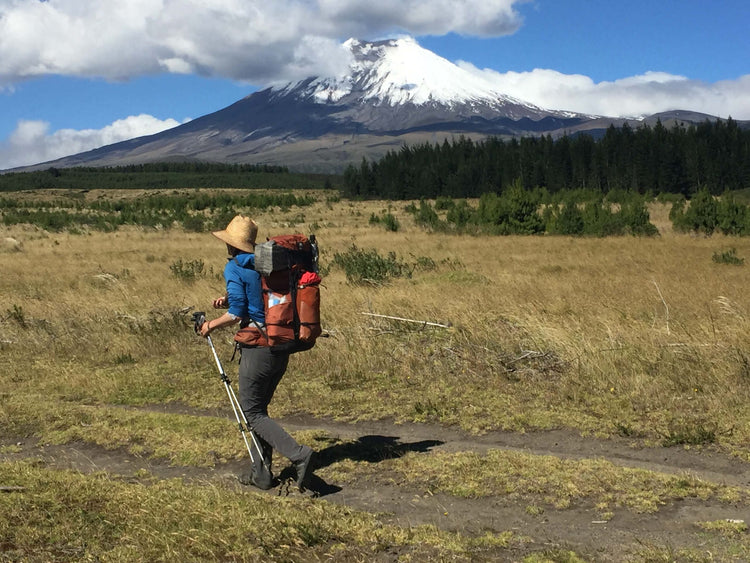
Foot Care for Endurance Athletes
“And forget not that the earth delights to feel your bare feet.” Khalil GibranOf the 206 bones in your body, 52 are in your feet. Each and every one contributes to getting you to where you are going and is a potential major hindrance if not cared for. As a long distance, long term athlete, I spend a lot of time on my feet. Over the last 7 years I have hiked 12,000 miles, paddled 1,500 miles, and bikepacked 4,000 miles. With 3,500 miles left to complete a non-motorized traverse of the Americas, physical maintenance, and specifically foot care, is crucial.One of the important lessons I’ve learned has been moderation. It sounds silly putting those two thoughts into the same sentence but it is a fundamental truth to how I’ve been able to keep going for so long. Maintaining a pace and stride which works for me, resting when my body needs it, and giving it the resources it needs to stay healthy and moving are all examples of moderation and care which I began learning when I started thru-hiking over a decade ago. And which I continue to learn and relearn when my body makes her demands known or insists in the form of months of illness, repeated bouts of overuse injuries, or other physical break down.Interestingly, these sorts of issues don’t usually spring upon you all at once. There are signs, symptoms. That tweak in your lower back. Is that a one time thing or is that the beginnings of chronic pain? Every endurance athlete knows this fear and the fact is, you never can know which it is going to be. What you can do is incorporate a steady practice of care and strength building to give your body its best chance. Similarly, there are dozens of small things you can do to prevent going down that road, or to aid in recovery as you regain strength and stamina. These are a few of those small practices which can make a big differenceDry Your FeetI spent the first 3 years of my backpacking career battling with trench foot. I came to think it was simply part of the experience. I tried doubling up on socks, traded my way up into Gortex boots and the issue only worsened. When wearing shoes and socks, your feet are experiencing a very different climate than the rest of your body. Usually it is a warm, damp environment, just the sort of place fungus like to grow. I was super glueing deep cracks in my heel shut. Until finally one day I swung in the opposite direction and wore lighter shoes and began airing my feet out more often. I quit sleeping in socks and the issue subsided.If you go barefoot or wear open sandals, your feet will be able to dry naturally. Still, if you are on a multi-day trip, rinse or wipe your feet off at the end of the day, paying special attention to the areas between your toes. Not only will this keep your quilt or sleeping bag cleaner, but it will also keep your foot skin healthier.When you are in a closed shoes sort of environment giving your feet time to air out whenever possible. Whether that is under your desk at work, on a lunch break along the trail, or the drive home from the trailhead, keeping your feet clean and exposed to the open air contributes significantly to your foot health. Mix it UpCross-training caught on in the endurance sport world over the past 20 years. All our muscle groups were made to work together so having one set particularly overdeveloped while others languish, doesn’t serve the sustained health of our physical systems in the long run. The same goes for our feet.While thru-hiking the CDT this past summer, I was retraining my feet after several months spent exclusively in my Xero sandals on sandy beaches and in a kayak. Due to constant high mile days, the weight on my back, and the terrain, I opted to hike in trail runners with more padding and zero drop and quickly began to have arch pain. Thus I began alternating between my sandals and trail runners throughout the day.Once the frosty mornings were past and when I took a breakfast break and aired out my feet, I would switch into my sandals for a few hours until lunch. At big river crossings, on smooth trail, and around camp, I was in my sandals. On thorny bushwhacks, across lava rock, and other rough environments, or at the end of the day when I was tired and not able to be as careful with my step, I would switch back into my trail runners. This switching back and forth made me very aware of my gait which is helpful because a hyper-extended gait is a leading cause of shin splints. While the cushion of the trail runners invited this sort of step, my Xeros reminded me not to fall into that.Thus, if like me, you aren’t ready to spend 100% of your time barefoot, there are still many ways and a lot of space for barefoot practices to improve your awareness of how you move, and your experience of both your body and the outdoors. Thank Your FeetNow, here I may get a bit hoakey for some folks, and I don’t mind if you skip on to the end, but at the end of a long and challenging day, I like to thank my feet. I leave my shoes at the vestibule, peel off my socks, and either soak my feet in a nearby stream or give them a good wipe down with a baby wipe. Then, sitting in the butterfly position or lying on my back in a modified happy baby pose, I wrap my hands around my feet and begin to stretch. Beginning just above my ankle bone I rub small circles and check in with all those tiny bones. With the texture of my skin. With the cracks in my skin. I thank them for the miles they have put in. Marvel at the ground they have covered and conditions they have weathered. Doing this I work my way all the way down the tops of my feet and then begin again at the ankles and cup my heel. In thru-hiking, that part of the foot takes a lot of heavy strikes and a lot of modern footwear encourages this, so they get an extra thank you for taking that extra whooping. Focusing on the soles of my feet and paying particular attention to both arches, I make my way to the toes. Stretching each toe individually and then tugging outward from the tip, pulling them long and a good final stretch before crawling into my sleeping bag and asking my body to do it all over again tomorrow.Endurance athletes ask a lot of our bodies but every thru-hike, ultra, or even just a junt around the block starts with one small step. The same measured moderation and care applies to foot care. Taking a few minutes out of your day or tacking a few extra on to your training routine may be hard to convince yourself of when you are trying to make miles or balance a busy lifestyle. Whether it is washing and airing out your feet, switching out shoes, or staying awake a few minutes longer in your tent to stretch your soles, small steps can make the biggest difference in the long run. After all, your feet are carrying the most weight on your body, giving them a few minutes of dedicated care is the least you can do.–Adventurer Bethany Hughes The content of this post does not constitute and is not intended to be a substitute for professional medical advice, diagnosis or treatment. Always seek the advice of a physician or other qualified health provider with any questions or concerns you may have about your health or a medical condition.
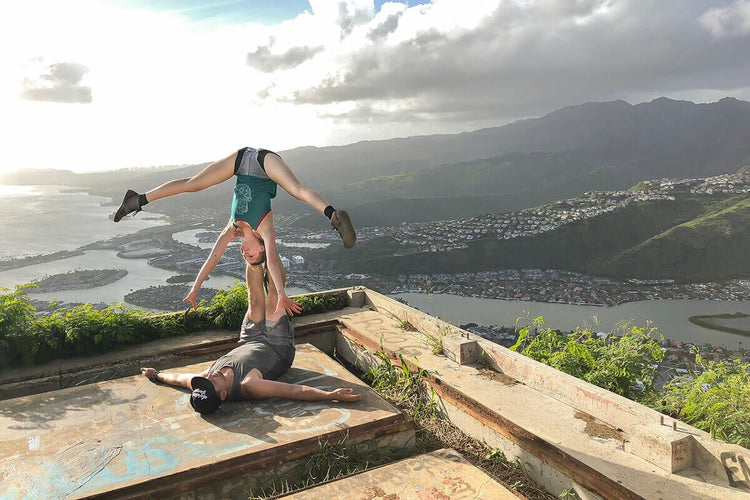
Hiking on a 49% Grade: Koko Head Crater Trail
If you’re ever on the Hawaiian island of Oahu, take time away from the beach to hike Oahu’s many trails. Each are beautifully unique, providing you access into the mountains or a path to breathtaking views. One of the most unique hikes you’ll ever experience is the Koko Head Crater Trail. Created by the military during World War II, this trail is a perfectly-straight line up the face of an ancient volcanic crater. The higher you go, the steeper the trail becomes. The trail is actually a former tram railway, where you’ll step on 1,050 railroad ties. Due to the extreme slope, each railroad tie is essentially a stair, providing a relatively safe, but exhausting climb to the summit. As the slope increases, each stair is substantially higher than a normal, seven-inch stair that you’re used to. Plan on 12-18” of gain with each step as you approach the top. Our Strava recorded a 49% grade for the entire top section of the rail trail. Forty-nine percent. You’ll definitely want to feel each railroad tie, safely below your foot, before you transfer your weight and step up. We loved the stability and light-weight simplicity of our DayLite Hikers, protecting our feet from the scorching-hot surface of the old railroad ties, while providing the flexibility needed for our feet to feel their way to the top of the climb. The ankle support and protection of the DayLite Hiker was also a huge advantage, as we asked our legs to do things they normally don’t do. There is one short section where the railroad ties are elevated. Don’t look down as you cross 50’ above the ground, stepping from one railroad tie to the next! This section of the trail is one of the flatter parts, and it will be over before you know it.Facing south with some head-tall vegetation, the trail is very exposed. We recommend an early-morning start to beat the heat and beat the crowds. Take more water along than you’d normally hike with. We’d definitely recommend a pack-mounted hydration system, since you’ll almost-certainly be scrambling on all fours on certain parts of your trek. Take several breaks going up—especially as you near the top. It may take you 20-45 minutes but it’s worth every step. Once you arrive at the top of the trail, explore the concrete remains of the World War II mountain-top military installation. You won’t be at the summit, but you can easily get there by climbing another 50-75 feet of elevation as you walk along the concrete structures and the connecting dirt paths. Known as a pillbox, these WWII-era, concrete structures are located on strategic viewpoints throughout the island, and are the destination for several dozen trails.The view at the top is spectacular, with 360-degree views of the surrounding area. Most impressive is the view of the trail itself, as you see a straight line descending below your feet back to the parking lot. In 0.7 miles of climbing, you will gain nearly 1,100 feet of elevation, and the return walk is as simple as putting one foot in front of the other.The Koko Head Crater Trail is easy to access, located near Hanauma Bay and the city of Hawaii Kai. Parking and the trail are free, but are quickly growing in popularity. Get an early start, stay hydrated, and be prepared for a unique experience that your legs will never forget.@WildAcroDuo Chris & RoxyThe content of this post does not constitute and is not intended to be a substitute for professional medical advice, diagnosis or treatment. Always seek the advice of a physician or other qualified health provider with any questions or concerns you may have about your health or a medical condition.
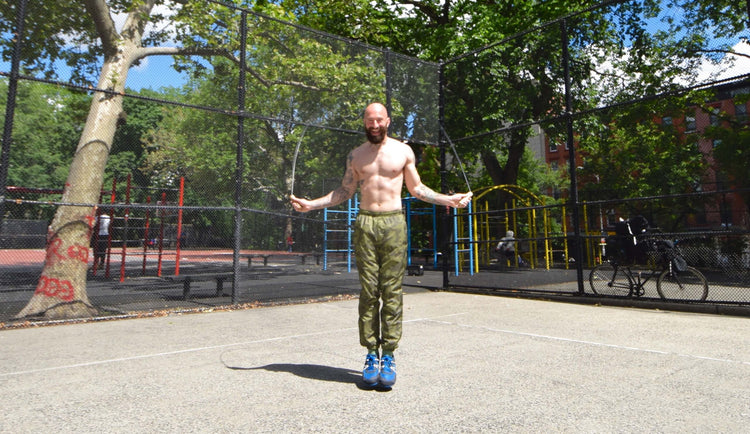
Jumping Rope for Cardio
It might be a lot of fun, but jumping rope is not just for kids. The jump rope is a fantastic device for building stamina and athleticism, plus it’s also a great method for burning fat.In fact, a jump rope is one of the best cardiovascular conditioning tools out there–way better than a treadmill or elliptical trainer. Plus you can take it with you anywhere!Jumping rope can also have a huge impact on improving your coordination and agility. You can probably expect to get winded and feel uncoordinated the first time you try jumping rope for cardio, but after a few sessions you will start to get the hang of it.Basic Jump Rope TechniquesThe first thing to learn is the standard two-foot jump. Start with the rope behind your heels, then whip in over your head and jump over it with both feet at the same time. If you are brand new to this, it might be best to just practice single jumps, resetting your rope after each rep. Eventually the aim is to transition from jump to jump as smoothly as possible.Once you get that move down, you can try alternating feet like you are jogging in place while the rope passes beneath you on each step.Crossovers and Double UndersAfter you’re comfortable with the basics, you can start to play around with crossover jumps. This entails switching the position of your hands in mid air, so your left hand winds up outside your right hip and your right hand is outside your left hip. On the next jump, you’ll then switch them back. It takes focus and coordination to get the timing right for this one, so be prepared to put in some practice before you will be able to perform them consistently. Also be prepared that you may need to jump a bit higher in order to stay in the air long enough to cross your hands back and forth between jumps.A double under refers to a jump in which the rope goes underneath the feet of the jumper twice during a single leap. In order to perform a successful double under, you’ll need to whip the rope extremely quickly and jump higher than normal to make room for the rope to pass beneath you twice before you land.Programming Your Jump Rope WorkoutIn the beginning, I suggest simply practicing the basic techniques before you worry about any specific programming. You can practice for a few minutes at the start of your workout as a warm-up, or do it at the end. You can also do it on a separate day entirely. As long as you get it in, when you do it is up to you.Once can comfortably jump continuously for at least 60 seconds, you can try doing intervals where you alternate between one minute of jumping and one minute or rest. Keeping that pace up for 20 minutes can be surprisingly tough at first! As your technique and conditioning improve, you can aim to make your jumping intervals longer and your breaks shorter. You can also increase the length of your sessions.For variety’s sake, I recommend practicing some crossovers and double unders, particularly during longer sessions. Be aware that these moves will be more tiring, however, so you may need to adjust your work-to-rest ratio to account for this. One of my favorite ways to practice crossovers and double unders is simply to pick a total number to aim for in a single session, then hit that target in as many sets as it takes, with as many breaks as needed. At first, you might aim to perform just 10 of each in a given session, as you will miss many of your early attempts and expend a lot of energy doing so. As you get more proficient, you can increase that number to 100 or more.So what are you waiting for? Grab your Xero Shoes and let’s jump around! -Al Kavaldo http://www.AlKavaldo.comThe content of this post does not constitute and is not intended to be a substitute for professional medical advice, diagnosis or treatment. Always seek the advice of a physician or other qualified health provider with any questions or concerns you may have about your health or a medical condition.
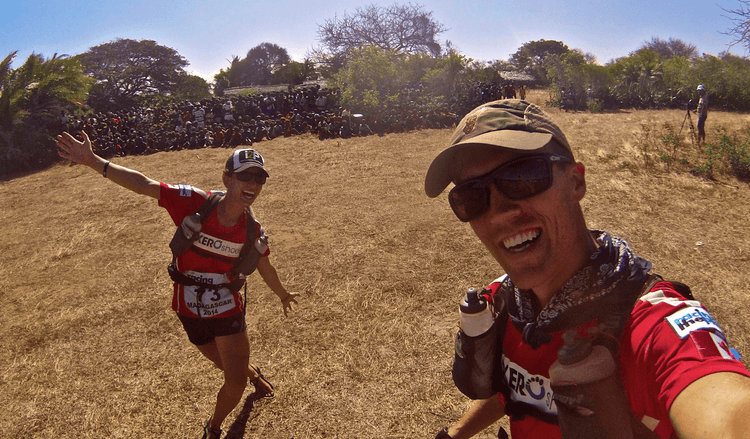
The Evolution of Xero Shoes in an Ultra Marathon Running Couple
Xero Shoes is a company that has come a long way. Looking back, we have come quite a long way as runners and adventurers. As we've grown, we've realized what a long way we've come WITH our Xero Shoes. We ordered our first pair of Xero Shoes in 2013 after reading the book Born to Run and wanting to get more involved with running minimalist. At that time we had both caught the running bug, and were running in our super smelly vibrate 5 fingers!The first pair of Xero Shoes we ever wore were the 4mm DIY sandals and we wanted to get trained up in them for our first ultramarathon together. Our biggest hurdle? It was winter in Edmonton, Alberta, Canada, and our race was only 3 months away. We had a few chilly runs in the cold with numb toes, to say the least. We managed to get enough training in, as we finished the Born to Run 100km race that we had planned! Later that year, we also ran a 50 mile ultra in Fernie, BC (Rocky Mountain style running!), a 100 miler in South Dakota (pretty flat, but HOT), and a 100km race in Costa Rica (where we legitimately ran with Tarahumara runners from Mexico!!). All of these were done in either the 4mm or the 6mm DIY sandals. So if any of you are still wondering “can you run in these?” Yes, you can run for miles and miles!Ultimately, we ended up being the first runners to complete one of 4 Deserts’ 7-day, 150 mile stage races wearing sandals. A year or two later we were living in Chile and Xero Shoes had just released their Z-Trek sandals. This was perfectly timed as we had two ultras planned that year in Chile, yet both had a lot of mountain running on rugged terrain, so we were super excited to wear the Z-Trek sandals at it gave you a bit more stability when on gnarly or muddy surfaces. Very soon after the Z-Trek was released, they launched the Z-trail, and we realized this one was our unicorn. The Z-style rig with a tiny bit more width of sole made it a primo piece of footwear for long trail ultras. We ran a 100 mile race down the entire length of the Florida Keys and with how hot and humid it was, it was super nice to have that tiny bit thicker sole for the 27 hours of pounding. We weren’t quite sure they would ever make the jump, but in 2016 Xero Shoes released their first actual shoe. While the first styles weren’t really built for running, we were excited to see where it lead. Low and behold, it shortly led to the release of our single most favorite shoe (ever): the Prio. With an absolutely incredible fit, a slick look, and the comfort, it's by far the best shoe we've ever put on our feet. I wore my first Prio for a wet and muddy 50km ultra near Seattle, with only two training runs to test them out. Not a single blister and they performed like a dream! It’s interesting how when you buy a shoe that just fits…you don’t have to “break them in." The latest big win for us was when Xero Shoes took the Prio and beefed it up a bit to make the TerraFlex, an athletic shoe with a bit gnarlier treads and a tougher upper. It’s pretty much everything we could have asked for in a perfect Prio… but made more for tough trail running. We’ve run races in the Canadian Rockies with these, over in a Morocco, and all over the US where we can find good trails! There have been a number of styles that Xero Shoes has launched that we love as well, but these were the keystone pieces of footwear that really progressed with us along our ultrarunning journey and we look forward to seeing what they’ll come up with next! :)–Mel & Jon The content of this post does not constitute and is not intended to be a substitute for professional medical advice, diagnosis or treatment. Always seek the advice of a physician or other qualified health provider with any questions or concerns you may have about your health or a medical condition.
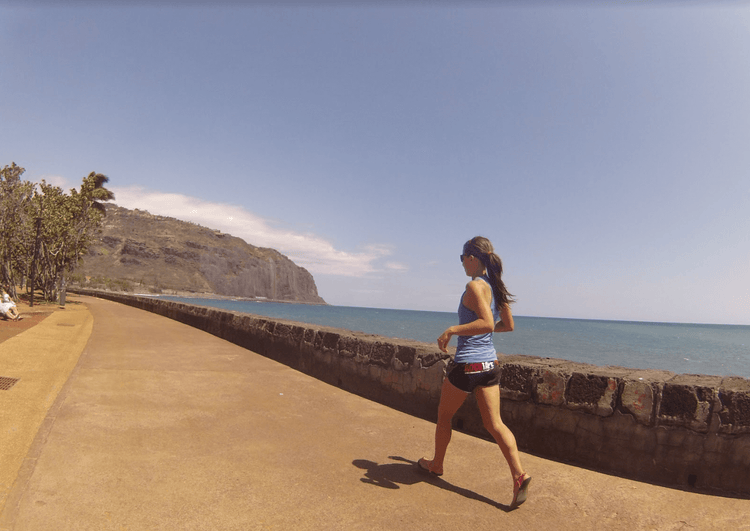
Tips to Transition to Minimalist Running
There is an overwhelming amount of information available in the world today on how to best make the switch from regular padded or “supportive” footwear to minimalist footwear. The Xero Shoes team themselves have accumulated an amazing amount of great information and other tips on making the transition, but as a couple of ultra-marathon runners who train and race (and actually spend most of our days every day) in minimalist footwear, we would like to share some of the things that helped us early on when we made the switch. Won’t be going into too much detail around the science and research side of it all, as we aren’t doctors or researchers ourselves, but lean on more of our purely experiential learnings from heavy training and recovery practices that we have. Transition Time This shouldn’t come as much of a surprise, as it’s talked about quite a bit surrounding the minimalist running topic. But we still want to reiterate it because it’s such a foundational part of transitioning to minimalist and really will be a key factor in your longevity in the practice. If you do just one thing from this entire article, do take your time during the transition, as no amount of stretching, rolling, supplements, or any other medical treatment will be able to PREVENT issues or injuries, the way building a solid foundation will. If you take the time to let the body adapt and strengthen the muscles, tendons and other tissues, you’ll save yourself a lot of setbacks down the road! Let us make one this very clear though, it’s not at all about the actual time (in days, weeks, months, etc.) it takes to transition, but more about the method of how you transition. The actual time to transition will depend on so many factors, so just focus on paying attention to your body and how it feels. When you feel like you’re ready to increase speeds or add volume then do so. Some people will adapt faster, some people are coming from different backgrounds, so just pay attention to your own journey and know that this is a long-term change and you will reap the benefits far into the future. One last tip we’ll include on this topic. If your goal is to transition to running in minimalist footwear, keep in mind that running is only a small portion of every day. Think about ways you can also spend time in minimalist footwear at work, around the house, while running errands. Between the Genesis sandals and the Hana/Cassie shoes, there’s footwear for just about every style, so these are great ways to build that muscular stamina you’ll need in your lower legs. Form This is the second layer that is super important to also PREVENT injuries from popping up during this transition. Watch videos, find a coach, read articles, basically consume as much information you can about minimalist running so that way you’ll know what you need to work on, and what things aren’t worth worrying about. For example, during the early days of the minimalist movement, it was all about landing on your forefoot. As more research was done, it wasn’t so much about which part of the foot lands first, but more about where your foot lands in relation to your center of gravity (good article on this). There are also some coaches who hammer on technique drills to get your movement patterns dialed in. Whereas there are other coaches who feel that it’s pretty tough to change 20, 30 or 40 years of muscle memory, so it’s more valuable to focus on proper muscle development to work with your pre-wires movement patterns. Bottom line, there’s a lot of conflicting information out there, and there’s no one perfect answer, or method or training, or form to use. But don’t just wing it by slapping on some huarache sandals and going for a 40km (25 mile) run! Bottom of foot rolling Two of the issues we BOTH noticed came up for us while we were ramping up our mileage in minimalist footwear, was 1) a mild cramping on the bottom of the foot, and 2) a more intense pulling pain on the top of the foot. After lots of troubleshooting, it seemed like the root cause of both of these was tight calf muscles. By switching to a more mid/forefoot landing, our calves had to work harder. This cause the calves to tighten up. The calf muscles are connected to insertions on the bottom of the feet by the facia, which explained why we were feeling the tightness down below. And because the calves were tight, they were pulling on the bottom of the foot, which required the muscles that attach to the top of your foot to hang on a little tighter to keep the foot stable. It was literally like a tug-o-war match! The single most effective remedy to both of these was surprisingly enough rolling a ball under our feet (while standing). We found a lacrosse ball was the perfect size and density to give good pressure without making us scream. However, a golf ball is also a decent option that you might have around your house. There’s no textbook technique, but two quick pointers: i) Move slowly ii) do long rolls from the front to the back of your foot. Magnesium (both internally and externally) After some longer runs on the weekends or other hard training sessions, you’re bound to feel some tight muscles. When a lot of your muscles are tightening up, it’s sometimes good to take a broader approach and address and help all of your muscles. Magnesium is something that many of us are actually deficient in, and it’s one nutrient that actually aids in our muscle function of letting go and relaxing. Magnesium supplements can be taken orally to give your body (including your aching leg muscles) some calming help. You can also find different muscle rubs that are applied to the skin and allow magnesium absorption that way, so this can be done specifically on the calves or other leg muscles that might be feeling extra tight. Kinesiology tape This one we want to set a precaution for. In a similar fashion to the way we think about painkillers, and that is that they simply mask an issue and risk pushing your body to a severe point of damage. Kinesiology tape does help two relieve certain types of pain. They also don’t have any of the side effects that painkiller medication have. And it does have some great benefits for improved blood flow and other neurological functions. But the overall “masking” issue is still there. Applying kinesiology tape to a muscle or body part in order to avoid pain or help you push through it, risks causing a lot of damage to the muscle. Now that we’ve said this, we are both advocates of kinesiology tape when a situation calls for it. Best to talk with a physical therapist (and best to have them apply it too!) to see if it can benefit you. We’ve used it during races when a muscle tightens up on us and there simply isn’t enough time to sit down and roll it out or wait for magnesium to kick in. Or if we have a race coming up some leg pain pops up the day before. Sure we’ll roll it out and do what we can, but to make sure we’re good to go for that starting line, sometimes we’ll consider applying some kinesiology tape. Hopefully, one or more of these tips can help you in your transition to minimalist footwear. The journey is absolutely worth it, and your body will be much better built up for physical activity for a long time to come! –Mel & Jon The content of this post does not constitute and is not intended to be a substitute for professional medical advice, diagnosis or treatment. Always seek the advice of a physician or other qualified health provider with any questions or concerns you may have about your health or a medical condition.C
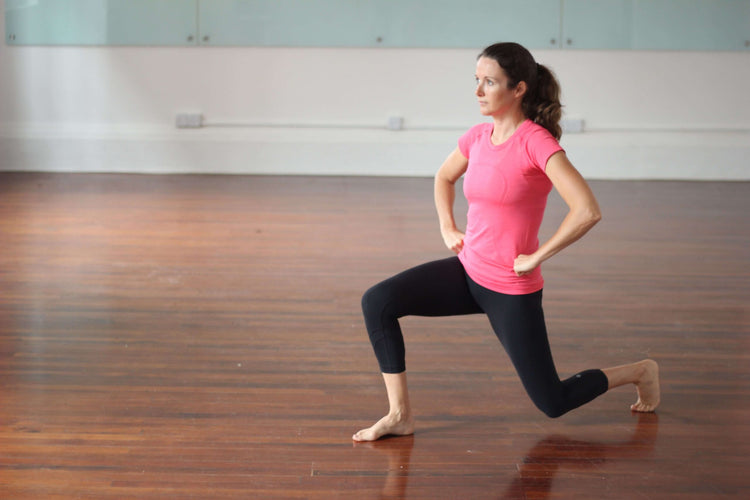
How to Get Primal with Your Fitness Plan
There is certain footwear that was designed to help your feet move naturally. Similarly, there are certain movement patterns that your body was designed to do. These are called the “primal movement patterns." The primal movement patterns should form the basis for your fitness plan if you want to move better, achieve better sports performance, or simply make activities of daily living easier.Over time, the primal movement patterns have slowly been neglected in the lives of many modern people. Perhaps you’ve gradually stopped moving the way nature intended as your lifestyle became more sedentary? Driving cars for long periods and sitting at desks all day are two of the modern day behaviors that take us away from having healthy, functional bodies if they are not adequately compensated for.So what are these primal movement patterns that your body was designed to do? And what type of fitness sessions can help you weave them into your plan? Let’s find out!The primal movement patternsSquatObserve toddlers doing this one if you want to check out some great form! Squats work your full lower body, specifically your quads, hamstrings and glutes. The squat movement provides a powerful foundation for most sports, as well as everyday tasks like picking things off the ground.LungeWorking similar muscles to the squat, lunges are another fantastic exercise for the lower body. They are performed in a split stance so require a bit of extra balance and co-ordination as compared to the squat. Practice your lunges to get a great leg reach and push when you’re out climbing rocks, or to take really strong strides when you’re hiking up a hill in your DayLite Hiker.PushThe push movement pattern is the one you would do in a push up, or during a bench press. The push action works your chest, triceps and the front of your shoulders. It enables you to push your bodyweight out of a swimming pool easily and to get the inertia needed to push a heavy door or trolley.PullWorking the opposing muscle groups to push exercises, the pull movement pattern focuses on your back, biceps and rear shoulders. It helps to create a balanced, tall posture and is a great counter-action to the forward rounding posture you might find yourself in when driving a car or sitting at a desk. In terms of workout exercises, the chin up, lat pulldown and seated row are all good examples of the pull movement pattern.BendBending involves hinging forward at the hips with a long, straight spine. It’s a common movement that is often done in place of a squat; for example bending down to pick a baby up off the ground. It may well be the movement pattern with the highest risk for injury, as a result of lower back issues stemming from a weak and/or inflexible spine. The straight legged deadlift is an example of a gym based exercise that uses the bend movement pattern.TwistOften neglected in workouts, the twist movement pattern is used in a huge number of everyday activities. You twist when you turn to look back over your shoulder, or to throw a ball. Twisting even occurs during walking and running. The twist pattern is often added to another movement pattern. For example, a twist could be added to the bottom of a lunge. It’s also done on its own in the case of exercises such as cable wood chops and medicine ball twists.GaitLast but certainly not least is gait, which is essentially walking and running. Yes, you were born to run! So whether you’re taking a leisurely stroll through the city in the Hana, or you’re hitting the trail in your Terraflex, you’ll be executing the gait movement pattern.So how can you incorporate these primal movement patterns into your fitness plan? Here are a few ideas…Primal fitness sessions Do a bodyweight workout that incorporates variations of the primal movement patterns. This is a great option because you can do it anytime, anywhere, and you can even do it completely barefoot. Find a progression level of each movement pattern that suits your ability and you’ll be sorted! Try a CrossFit class. CrossFit classes incorporate primal movement patterns using your own bodyweight and small equipment. The CrossFit philosophy aligns with the barefoot movement so many attendees will likely opt to wear barefoot style shoes. The Prio is a great choice for this type of workout. Other types of workouts that generally incorporate the primal movement patterns include bootcamps and circuit classes. How are you going to incorporate the primal movement patterns for a functionally fit body? Grab your favorite pair of Xero Shoes and go for it!–Elly McGuiness, ellymcguinness.com The content of this post does not constitute and is not intended to be a substitute for professional medical advice, diagnosis or treatment. Always seek the advice of a physician or other qualified health provider with any questions or concerns you may have about your health or a medical condition.



